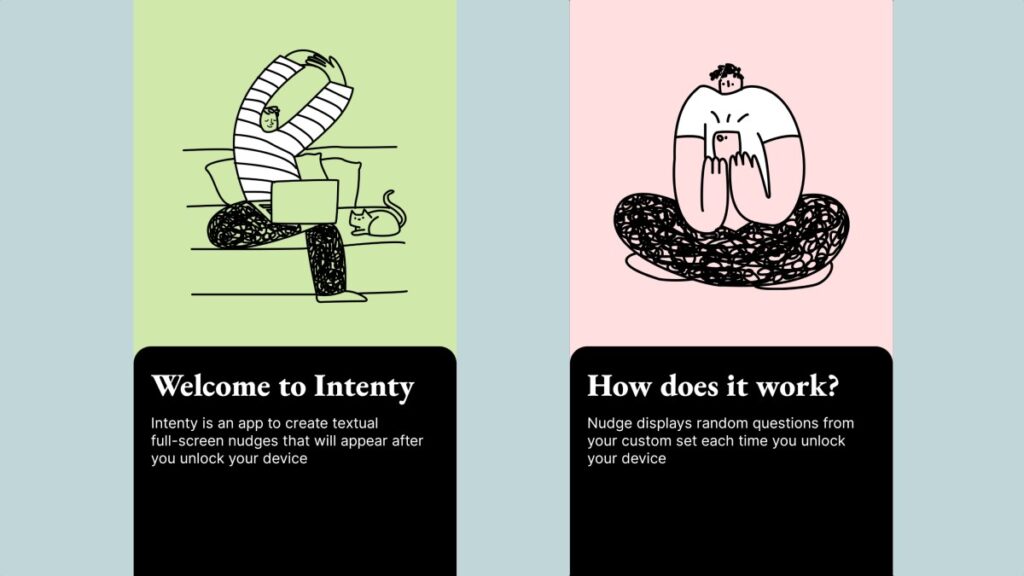[ad_1]
Intentional phone usage is a tricky habit to develop. Operating systems like iOS and Android, along with social media networks like Instagram and TikTok, have built timers, nudges, and controls around the usage of the apps or the platform.
But at times, you mindlessly unlock your phone as a force of habit to eventually do nothing or scroll timelines. To get rid of the habit, Ukrainian developer Yaroslav Neznaradko has built an Android app called Intenty, which nudges you to provide a reason or do an action like breathing or stretching every time you unlock the phone.
Neznaradko started thinking about this problem in 2019 when he spent a lot of time on his phone.
“I found myself checking my phone too much (email, social media, news). I tried screen time limits, focus modes, and app blockers, but they were rather frustrating than helpful. And I got an idea. What If I had to state and evaluate my intention before using the phone? That’s where it all started. As a prototype, I even tried to write my intentions in the notebook every time I needed my phone, and it worked for me,” he told TechCrunch over email.
He released an initial version in 2020, but it was limited to one usage of asking users questions about why they were unlocking their devices. He also developed an iOS version but realized the platform had many limitations. Eventually, the project stalled until 2023.
Last year, he rebranded the app to Intenty and focused on the Android version. Because ChatGPT was newly released at that time, he decided to ask people to chat with a bot about their intentions of using the device when they unlocked the phone. But that didn’t stick with users.
After researching human and computer interaction, Neznaradko released a redesigned version this summer that allows users to customize nudges. You can select nudges from several categories, such as Intention, Necessity, Grounding, Posture, and Minimalism. All of these categories have different numbers of prompts, and you can add a new category or prompt as well.
You can swipe out from the nudge screen to avoid entering the reason, but then it defeats the purpose of using the app. You can set a cooldown time, so the nudge doesn’t show up right after you lock the phone, in case you’re waiting for someone’s reply. What’s more, you can set the intensity of nudge pop-ups by setting them to appear on every 2nd, 3rd, 5th, or 10th unlock.
The app also shows you the history of your answer logs and the number of times you unlocked the phone over time.
Intenty is free, but you can pay $1.99 per month to unlock scheduling for nudges, a hard mode that forces you to enter a reason, and a lock button to lock your phone from the nudge screen.
There are other apps that help you reduce screen time: One Sec, which shows you an exercise or an action when you open a social media app, and Minimalist Screen Time, which turns your phone into a device with limited functionality.
After Neznaradko posted about the new version of Intenty on Hacker News on Wednesday, many people provided feedback about how they might want the app to behave and not nudge them every time. Neznaradko said that understanding the pattern of unlocking and not nudging the user when they want to do a quick action like taking a photo is a challenge.
He is working on creating a reminder or a popup during a long phone usage session. He is also exploring a way to deal with fatigue from the nudge and automatically refreshing the content of those prompts. In the long term, he possibly wants to add image or video nudges, too.
[ad_2]
Source link

